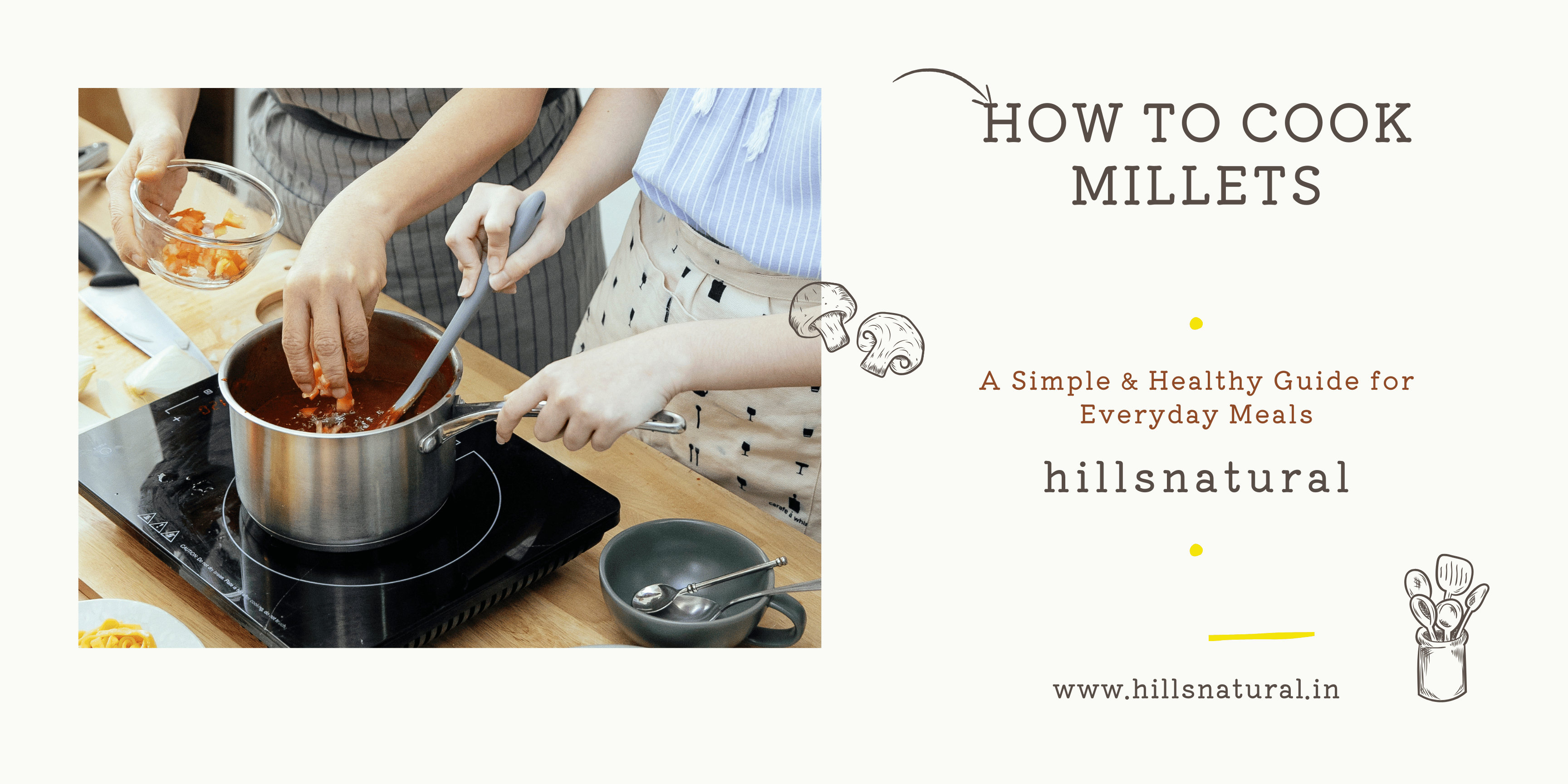
ntroduction: Why You Should Start Cooking Millets
If you’re looking for a wholesome alternative to rice or wheat, millets are a fantastic choice. These ancient grains are not only gluten-free but also rich in fiber, protein, and essential nutrients. Learning how to cook millets the right way ensures you get the perfect fluffy texture and preserve all their natural goodness.
Step 1: Choose Your Millet Variety
Before you start cooking, it’s important to pick the right millet for your recipe. Each type has a unique taste and texture.
For instance, Little Millet (ചാമ): A Complete Guide to Its Benefits, Uses & Nutritional Value offers insights into how this millet is light, quick to cook, and perfect for upma or porridge.
Similarly, Kodo Millet (കൂവരഗ്): A Complete Guide to Its Benefits, Uses, and Nutritional Value explains how Kodo millet’s nutty flavor makes it ideal for pulao and salads.
Step 2: Rinse and Soak Millets
Rinsing removes dust and impurities, while soaking helps reduce cooking time and improve digestibility.
- For soft texture: Soak millets for 4–6 hours.
- For firmer grains: Soak for just 30 minutes or cook directly after rinsing.
Step 3: Cooking Methods
There are three popular ways to cook millets — on the stovetop, in a pressure cooker, or using an electric cooker.
1. Stovetop Method:
- Ratio: 1 cup millet to 2½ cups water.
- Boil water, add rinsed millet, cover, and cook on low heat for 15–20 minutes.
2. Pressure Cooker Method:
- Ratio: 1 cup millet to 2¼ cups water.
- Cook for 1 whistle on medium flame. Let pressure release naturally.
3. Electric Cooker or Instant Pot:
- Ratio: 1 cup millet to 2¼ cups water.
- Cook on “rice mode” or for 10 minutes on high pressure.
Step 4: Fluff and Serve
Once cooked, allow the millet to rest for 5 minutes before fluffing it with a fork. Serve it hot with curries, sautéed vegetables, or even as a base for Buddha bowls. You can also use millets for dosas, idlis, or desserts.
Conclusion: Make Millets Part of Your Daily Diet
Now that you know how to cook millets, it’s time to bring these nutritious grains into your kitchen. They’re versatile, eco-friendly, and promote better health. Whether you start with Little Millet or Kodo Millet, you’ll enjoy their natural flavor and incredible benefits.
Switching to millets is more than a dietary change — it’s a step toward sustainable and mindful eating.

